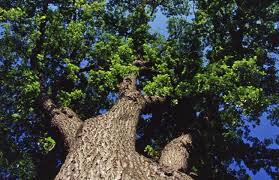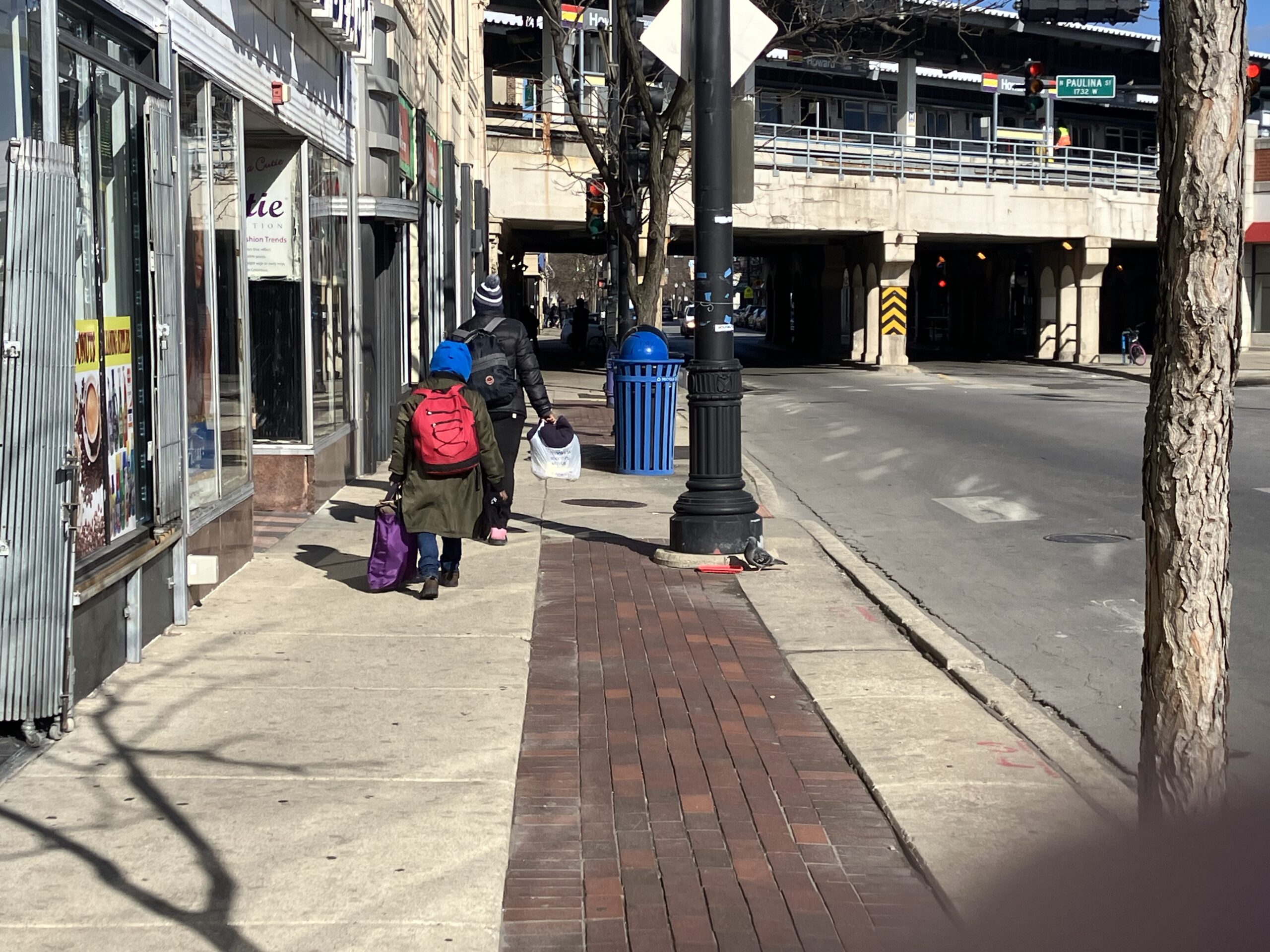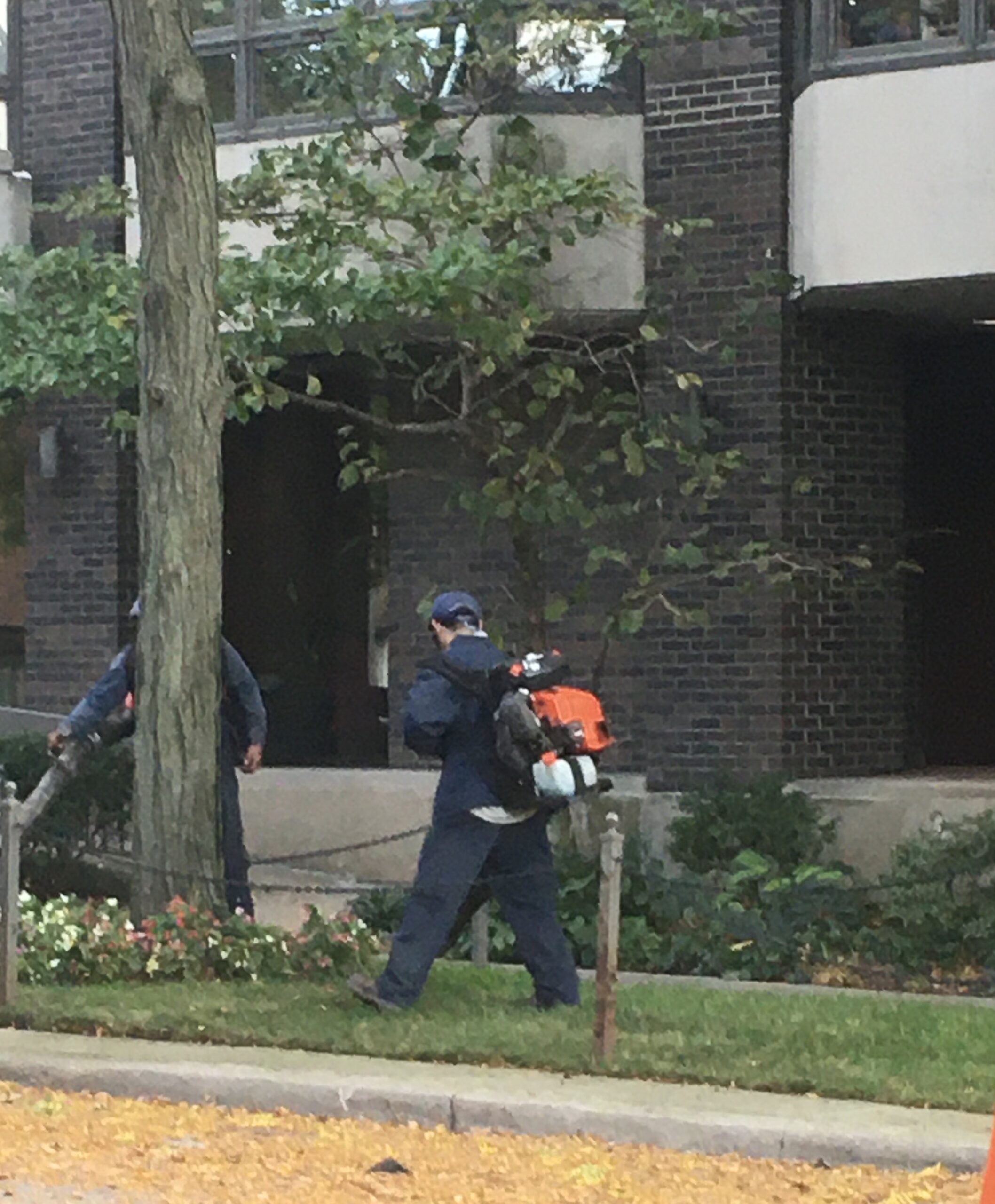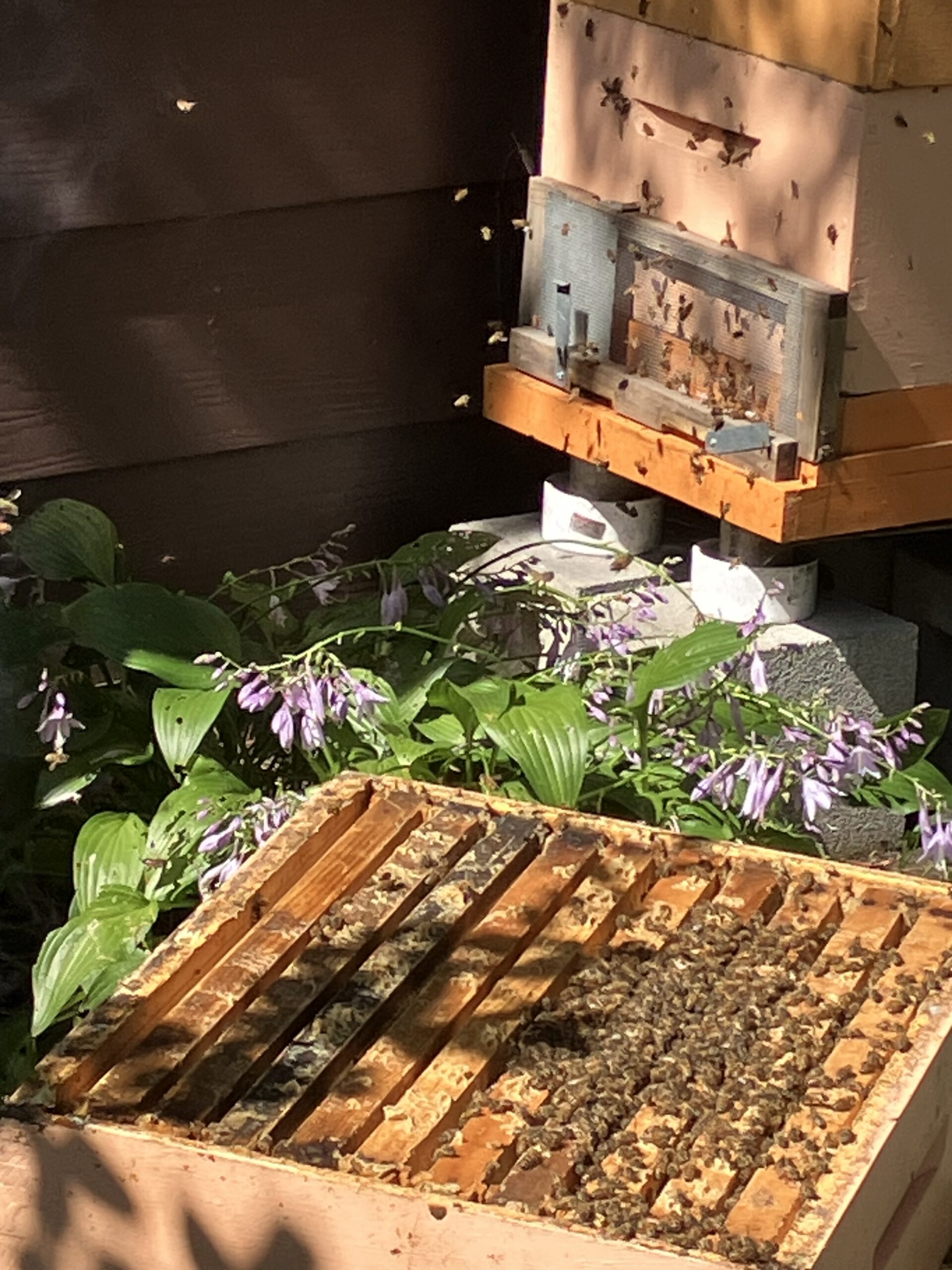City looks at ways to protect trees, even on private property, with proposed changes
By Bob Seidenberg
If proposed changes to Evanston’s tree policy go through, residents would be required, in many cases, to apply for a special permit before removing trees from private property.
If the property is slated for construction, and the tree is not dead or hazardous, the owner may need to obtain a variance from a City Council committee before removing it.
City officials at the City Council’s Planning and
Development Committee outlined on July 10 the proposed changes to their tree protection policies.
The recommendations grew out of a reference from the plan committee to the Evanston Environment Board to develop an ordinance that protects trees on private property, said Emily Okallau, the city public services coordinator, in a memo and presentation at the meeting.
Wilmette offered one example
Environment board members sought assistance from City staff members, who looked at neighboring communities with private tree ordinances, Okallau said.
“There are examples of tree preservation ordinances throughout the area and throughout the North Shore. And staff reached out to those peers to discuss how the ordinances work, how trees are protected. And one of the resounding comments that was received – the feedback that was received – is that they often impose heavy fines,” she told plan committee members. “They impose a lot of money, but they don’t necessarily protect trees.”
The only community with a different type of ordinance, staff found, was Wilmette. That village allows tree removal only when a request is associated with a building permit, Okallau said in her memo.
To remove a tree without an associated building permit, property owners must seek a variation from the Village Board; there have been no such variation requests in the two years since the ordinance was passed,” she reported.
Staff took the information they had collected and, working with the City’s Community Development Department, then “looked at what it would actually look like to protect trees, and that’s where we are tonight,” she told plan committee members.
“Trees on private property are not currently regulated by City Code (with the exception of property greater than 2 acres in area),” Okallau noted in her memo, “and property owners can freely remove and otherwise impact their trees.”
A study by the Chicago Region Trees Initiative showing that at least 70% (and likely closer to 80%) of tree canopy in Evanston is on private property, Okallau reported.
She said that with that in mind, preserving trees on private property is “critical” to the city’s Climate Action Resilience Plan, as well as other efforts by the city to restore climate stability.
The changes apply to trees generally regarded to have “significantly valuable ecosystem and community contributions; often (but not exclusively) native; high-quality habitat for other plants and animals; appropriate for public spaces; are neither invasive nor aggressive propagators,” according to city practice.
A visit from the arborist
Okallau told committee members that they recognize there are instances “when trees need to be removed, when trees are dead, and when trees are hazardous, when they are not appropriate for the site.
“There’s a clear path for that – it’s an easy path,” she maintained.
“Second to that, most often trees are impacted when there is construction of the property, where there is some sort of digging, some sort of an addition,” she said. “And so a tree preservation permit … would be integrated into the workflow of other types of building permits as appropriate.”

Where construction doesn’t apply, and trees are not dead or hazardous, property owners would have to go through a different process.
“Property owners who would like to remove a tree just because they don’t like the look of it, they have to request a variation,” she said. Currently, “there’s no process through the building permit process to be able to do that.”
Where there is construction, the person on staff making the visit will be a certified arborist.
The arborist will do a site assessment, she said, and inform the property owner how the project will affect trees on the property and neighboring properties.
Where construction doesn’t apply, and trees are not dead or hazardous, property owners would have to go through a different process.
“There’s opportunity to mitigate the impact,” she said.
Community development department expresses concerns
In her presentation, Okallau noted that the city’s community development staff members had raised concerns about “unintended consequences the ordinance could have on the building permit process,” including that:
- Implementing the tree preservation permit would require changes to approximately 30 individual permit and zoning workflows;
- Property owners may be reluctant to plant trees if they feel it will limit their ability to expand their home/property in the future;
- Projects on smaller lots are more likely to impact trees on neighboring properties, disparately affecting property owners in low/moderate-income neighborhoods;
- Additional costs and extended approval times for building permits and construction may reduce the development of housing types such as detached and attached dwelling units that provide smaller and affordable housing options, particularly in high-cost neighborhoods.
- Community development department expresses concerns
- In her presentation, Okallau noted that the city’s community development staff members had raised concerns about “unintended consequences the ordinance could have on the building permit process,” including that:
- Implementing the tree preservation permit would require changes to approximately 30 individual permit and zoning workflows;
- Property owners may be reluctant to plant trees if they feel it will limit their ability to expand their home/property in the future;
- Projects on smaller lots are more likely to impact trees on neighboring properties, disparately affecting property owners in low/moderate-income neighborhoods;
- Additional costs and extended approval times for building permits and construction may reduce the development of housing types such as detached and attached dwelling units that provide smaller and affordable housing options, particularly in high-cost neighborhoods.
Speaking at the July 10 plan committee meeting, Sara Flax, the city’s community development director, acknowledged that “there are some areas that we think need to be clarified and perhaps need a little more thought and work.”
She expressed hope the department can do outreach and educate people on the changes “because whatever you’re doing, people want to get their projects going fast. And when they find out they have another step and things like that, we want to try to keep that from being … ‘What’s the city asking of me now?’”
The department estimates that approximately 500 building permits may be affected, “and it could be actually quite a few more than that,” Flax told the committee.
Council members were generally supportive in what was their first discussion of the proposal.
Council Member Bobby Burns, 5th Ward, sought more details about what the cost would be to the property owner, noting the current cost of a tree preservation permit is $75.
Okallau said if trees are not removed on a property, the fee would stay at $75.
If, however, property owners are proposing to remove trees, that action would trigger a mitigation process in which the property owners would either need to plant a tree to replace one being removed or pay a fee.
Plan committee members didn’t act on the proposal, which was just up for introduction. The committee tabled action on the ordinance until their Aug. 28 meeting, where more discussion is expected.
Trees connected to climate change and public health
During public comment earlier in the meeting, several current and former members of the Evanston Environment Board urged adoption of the ordinance.
Wendy Pollock, co-chair of the environment board, said in voting for the changes that “Evanston will join neighboring communities like Wilmette and cities in other parts of the country like Cambridge, for example, that have already taken this important step.”
Pollock told plan committee members that the environment board has been discussing and considering the ordinance for three years or longer.
“During that time, community members providing public comment at Environment Board meetings have spoken universally in favor of preventing healthy trees from being cut down on private property. And the board has worked back and forth with city staff and members of City Council to discuss the language provisions and trade-offs reflected in the current proposed ordinance,” she said.
“We also have extensively discussed and considered the importance of equity in both the wording and implementation of this ordinance,” she said. “It meets the goals of the environment board. Evanston’s urban forest provides benefits to everyone in the community. We all share responsibility for this resource.”
Cherie LeBlanc Fisher, who just completed two terms on the environment board and served as its co-chair for four years, noted that research has shown that trees provide many benefits, especially in cities.
“The connections between trees and climate change, and between trees and public health may not be obvious to everyone,” she said, but “there are many proven connections. When we have record summer heat, trees help cool our homes or cars, sidewalks and public spaces. When we have intense rainstorms, trees keep soil from eroding and absorb stormwater. When we have smoke from Canadian wildfires … our trees help clean the air. It is easy to think of trees on private property as privately owned, but they are a community resource that benefits everyone.”
She said “removing just one mature tree eliminates benefits that cannot be replaced for decades by planting small trees.”
Janet Alexander Davis, co-chair of Environmental Justice Evanston, said the group was concerned to learn about the staff memo that raised issues around the ordinance’s potential negative impacts.
Davis, a lifelong resident of the city, said she understood that Evanston wants to address a housing crisis and that those efforts may result in new development.
“It must be addressed by thoughtful planning that is consistent with all of our environmental and climate goals, not by creating a false conflict with the goals of tree preservation,” she said. “Evanston trees form an interconnected urban forest – whether on public land or private property. That provides valuable environmental services like improved air quality, cooling shade, and habitat for birds and other wildlife. City planners should look for solutions that can satisfy both goals.
“The environmental justice advocates in Evanston have heard strong support for an enhanced tree canopy in the 5th Ward and other underserved areas in Evanston,” she said. “These neighborhoods suffer from higher temperatures due to the presence of fewer shade trees.”




